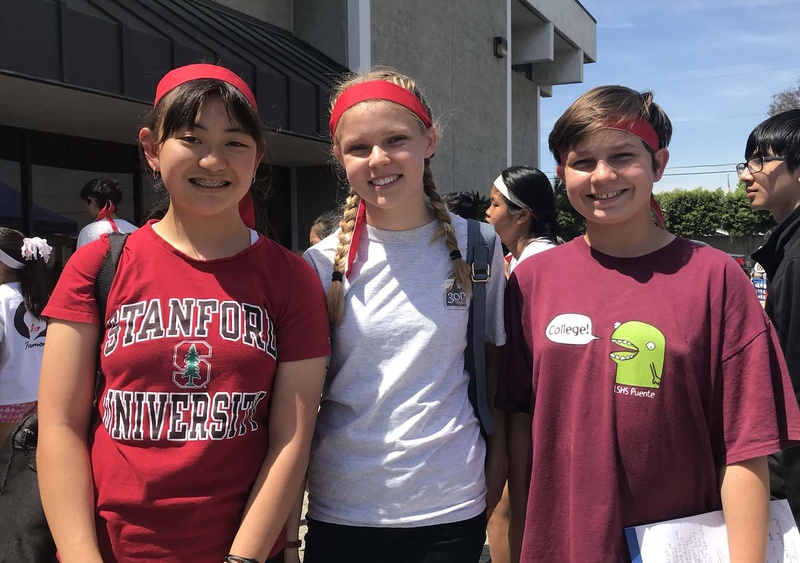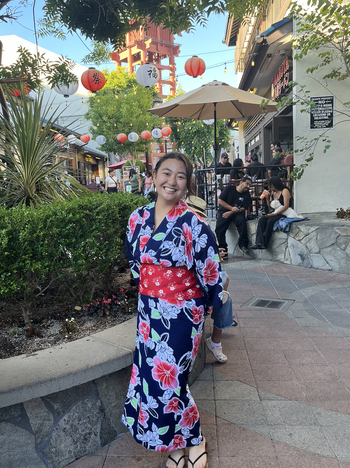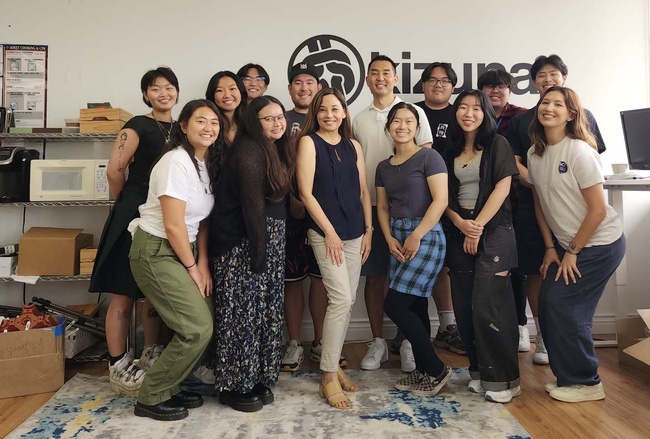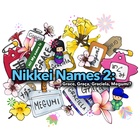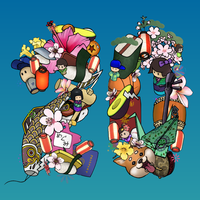My name is Mai Omoto. I've never had an English name. With a name like mine, my identity as a Japanese American is evident at first glance. I've always felt connected to my cultural heritage. My mother is a Nisei, or second-generation Japanese American, and my father is half Nisei Japanese American and half Sansei (third generation) Chinese American. My parents infused aspects of Japanese culture within my upbringing. Growing up, I participated in typical Japanese American customs, like saying itadakimasu before meals. The mix of Japanese words within our English-dominant household felt instinctive, to the point where I didn’t even consider them as part of a different language, despite not speaking Japanese fluently.
From the age of five, I attended Japanese language school at Orange County Buddhist Church (OCBC) every Saturday morning. There, I met other children my age who were also Japanese American. Two of my friends, who were Caucasian, chose to learn Japanese alongside me. Together, from kindergarten through our senior year of high school, we attended class every week to study the language. This became so natural that I didn’t think about the fact that my friends, who had no ethnic ties to Japan, were immersed in an environment rich in Japanese American culture because of me.
This experience shaped my perception of cultural identity. I never considered the fact that I was one of only three Asian students in my elementary school class or that my Japanese name might pose challenges for my teachers. In first grade, my teacher routinely misspelled my name as “Mia.” Because I never corrected her, my name was misspelled on every paper until my mom noticed halfway through the year and asked why it was being written as “Mia” instead of “Mai.” It was only then that my teacher realized the error, despite the fact that she was most likely given a roster with my name correctly spelled at the beginning of the year.
As a six-year-old, I didn’t grasp that people struggled with my name because it was Japanese. For most of my early childhood, I didn’t fully register that my name was Japanese at all. As I grew older, I began to notice the difficulty others had pronouncing my name. On the first day of school each year, teachers would read my name as “Mei,” “Mia,” or “Maya” before I corrected them. Sometimes, I didn’t bother correcting people at all, learning instead to respond to these variations to avoid the hassle.
These repeated incidents made me increasingly aware that there were few, if any, Japanese Americans in my daily life. My middle and high schools were predominantly Asian, but I didn’t know any other Japanese students in my grade. My friends in middle and high school were predominantly Chinese and often bonded over shared cultural experiences. I felt envious of their easy connection, feeling increasingly isolated from other Japanese Americans my age. In an effort to compensate for this isolation, I tried to talk more about my identity, only to be told that I was making it my “entire personality.” This discouraged me from sharing this part of myself.
Despite this isolation, I was always proud of being Japanese. In middle school, I learned the kanji for my name (尾本麻衣) and wrote it repeatedly on everything until I memorized it. I took Japanese in college to become fluent and resolved to study abroad in Japan. In college, I found friends in my Japanese classes who, despite not being ethnically Japanese, shared a passion for learning the language and understanding the culture. Speaking Japanese with friends who were equally passionate reinforced my desire to connect more deeply with my heritage.
Yet, I still felt something was missing. The Japanese American experience, with its long and complex history, is unique in its own right, distinct from Japanese culture in many ways. I didn’t grow up participating in girl scouts or basketball leagues, and my college didn’t have a Nikkei Student Union. It wasn’t until I found the Kizuna Nikkei Community Internship that I met a group of Japanese American peers with whom I could truly connect. This experience made me realize that the Japanese American experience is far more diverse than I had imagined. Each of my peers had their own unique connection to their Japanese identity, and together, we explored how special each connection was. I came to understand that there is no one way to define the Japanese American experience.
After completing the internship, I felt strongly that this was an invaluable opportunity for many reasons. One of the most important was that it was one of the first times I felt validated and secure in my identity. I was encouraged to feel proud of my connection to my culture. I learned that being Japanese American was not just about speaking Japanese and participating in traditions such as attending obon festivals. It was also about learning our history and how that shaped the community we have today. It was about learning how to tie generations together by attempting to understand generational differences. It was about observing the community we do have and trying to create ways to preserve and protect our shared spaces from becoming victims of gentrification. As I met various members of the Japanese American community, I could feel how strongly each person valued their connection to the community, and I felt such a sense of pride that I could be a part of this experience.
My name is a constant reminder of my pride in being Japanese American. It motivates me to continue pursuing fluency in the Japanese language and inspires me to learn more about Japanese culture. I feel fortunate to have a name that connects me so deeply to my heritage. Each time I correct the mispronunciation of my name, I’m reminded of how I am proud of the way I am different.
© 2024 Mai Omoto
Nima-kai Favorites
Each article submitted to this Nikkei Chronicles special series was eligible for selection as the community favorite. Thank you to everyone who voted!


